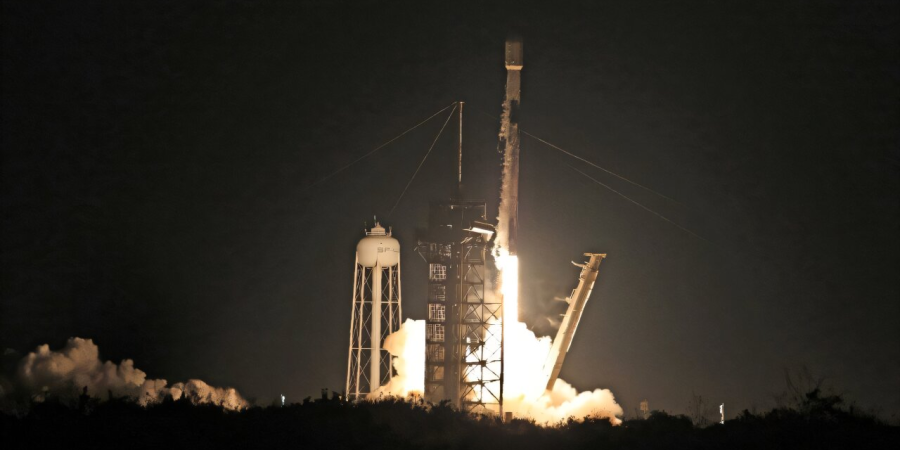Private US company blasts off for second Moon landing attempt

KENNEDY SPACE CENTER, UNITED STATES, FEB 27 (AFP/APP/DNA):A US company is aiming for its second lunar touchdown after a lander carrying a suite of unique experiments successfully launched aboard a SpaceX rocket on Wednesday.
Intuitive Machines made history last year as the first private entity to put a robot on the Moon, though the triumph was marred by the lander tipping onto its side — something it hopes to avoid this time around.
The Houston-based firm’s hexagonal-shaped lander, Athena, blasted off in a SpaceX Falcon 9 rocket at 7:16 pm (0016 GMT Thursday) from NASA’s Kennedy Space Center in Florida.
If all goes well, it will touch down around March 6 at the vast Mons Mouton plateau, a site closer to the lunar south pole than any previously targeted.
Athena carries scientific instruments, including a drill to search for ice beneath the surface and a first-of-its-kind hopping drone named Grace after a famous computer scientist, Grace Hopper.
It is designed to traverse the Moon’s rugged inclines, boulders, and craters — a valuable capability to support future crewed missions.
Also aboard is a small rover, which will test a lunar cellular network provided by Nokia Bell Labs by relaying commands, images, and video between the lander, rover, and hopper. This network is planned to eventually be integrated into astronauts’ suits.
Intuitive Machines CEO Trent Martin spoke excitedly about the hopper, emphasizing that such drones could complement rovers in future missions by going “down into extreme environments where you can’t drive,” including lunar pits and underground passages carved by ancient lava flows.
Until recently, soft lunar landings were achieved only by a handful of well-funded national space agencies.
Now, the US is working to make private missions routine through the Commercial Lunar Payload Services (CLPS) program, a public-private collaboration aimed at delivering NASA hardware to the surface at a fraction of the cost of traditional missions.
“I’m very excited to see the science that our tech demonstrations deliver as we prepare for humanity’s return to the Moon and the journey to Mars,” NASA’s Nicky Fox told reporters, referencing the Artemis program, which aims to return astronauts to the lunar surface later this decade.
Related News

Japan funds rs4.1bn maternal health center in Sindh
ISLAMABAD, JUL 25 /DNA/ – Inauguration Ceremony for “The Project for the Extension of MaternalRead More

PM forms committee for improving civil service structure
ISLAMABAD, Jul 24 (APP/DNA):Prime Minister Shehbaz Sharif on Thursday formed a committee under the chairmanshipRead More


Comments are Closed